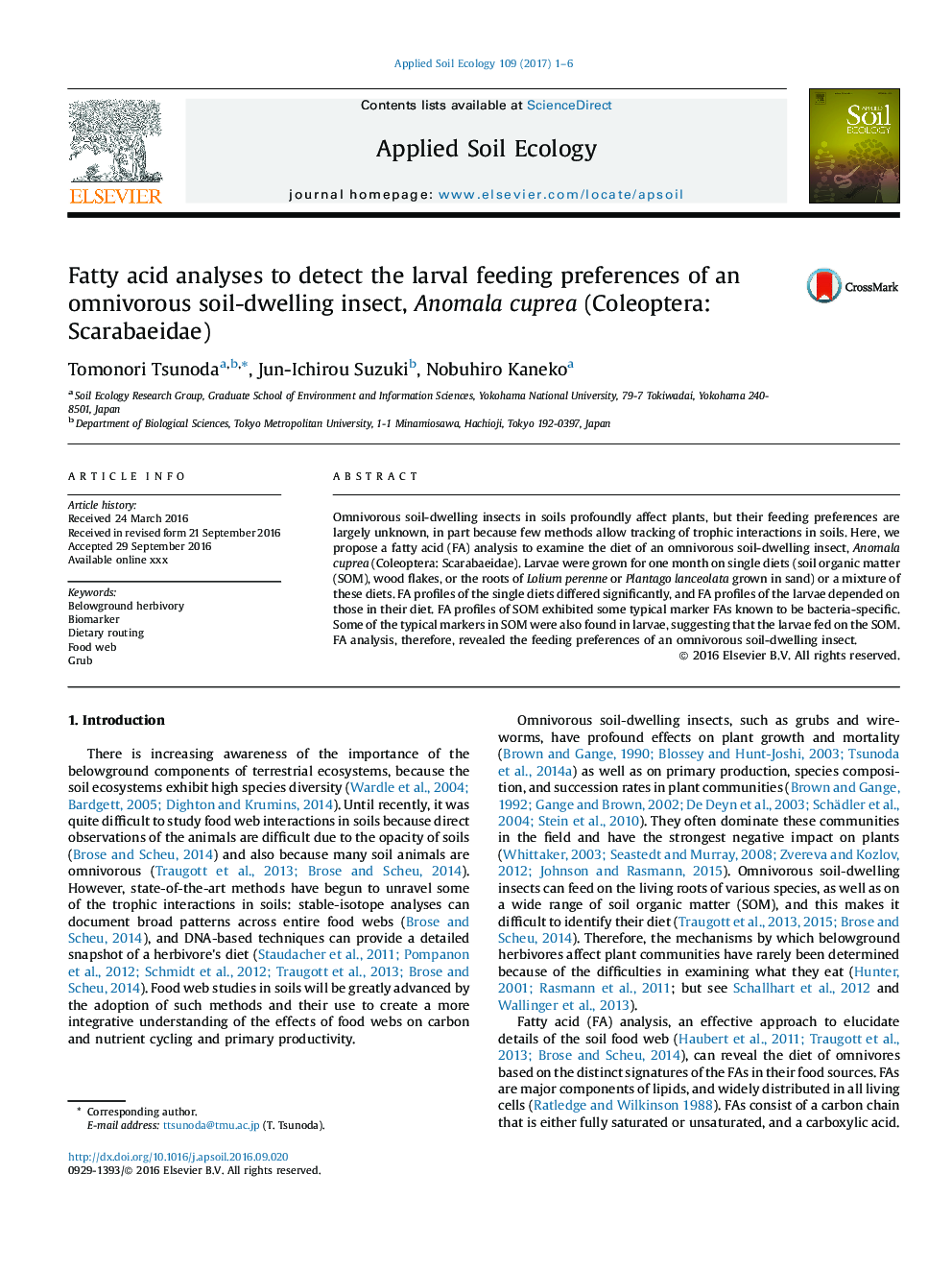| Article ID | Journal | Published Year | Pages | File Type |
|---|---|---|---|---|
| 4381763 | Applied Soil Ecology | 2017 | 6 Pages |
•Fatty acids in the diets of an omnivorous soil insect were detected in the insect.•Especially, fatty acids with a side chain transferred to the insect.•Fatty acid analysis provided important clues to the omnivore’s diet.
Omnivorous soil-dwelling insects in soils profoundly affect plants, but their feeding preferences are largely unknown, in part because few methods allow tracking of trophic interactions in soils. Here, we propose a fatty acid (FA) analysis to examine the diet of an omnivorous soil-dwelling insect, Anomala cuprea (Coleoptera: Scarabaeidae). Larvae were grown for one month on single diets (soil organic matter (SOM), wood flakes, or the roots of Lolium perenne or Plantago lanceolata grown in sand) or a mixture of these diets. FA profiles of the single diets differed significantly, and FA profiles of the larvae depended on those in their diet. FA profiles of SOM exhibited some typical marker FAs known to be bacteria-specific. Some of the typical markers in SOM were also found in larvae, suggesting that the larvae fed on the SOM. FA analysis, therefore, revealed the feeding preferences of an omnivorous soil-dwelling insect.
